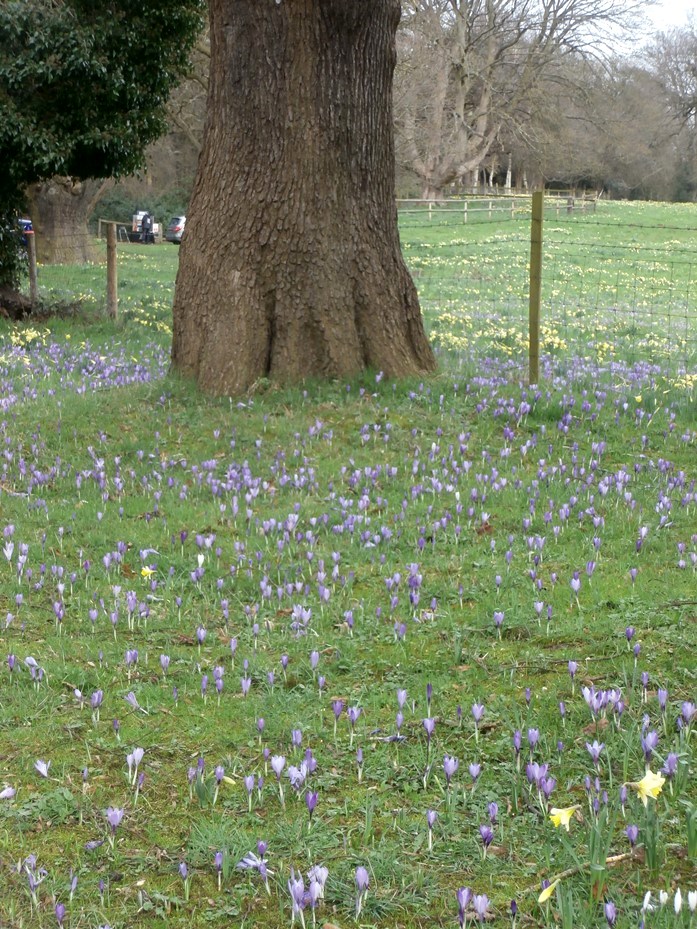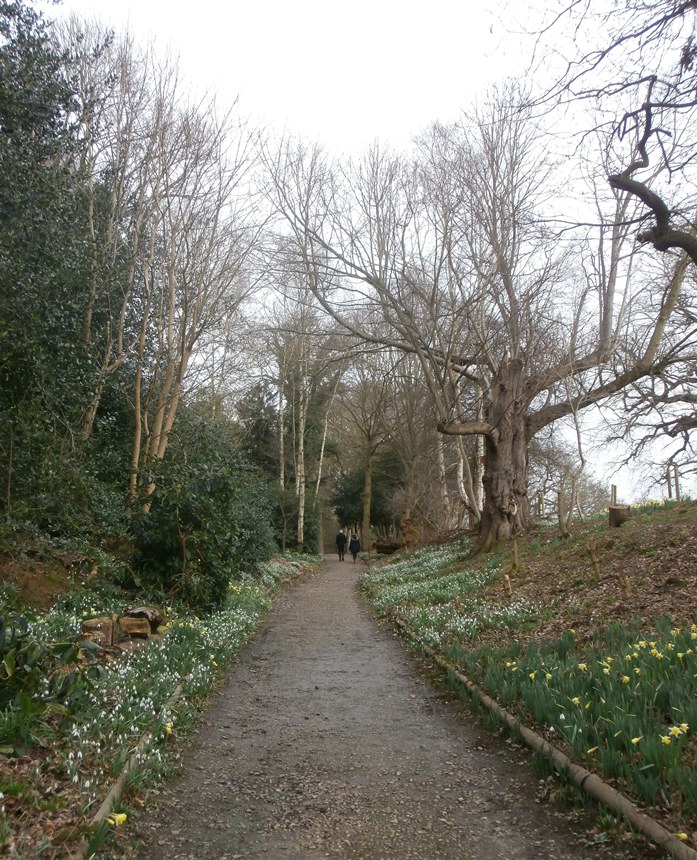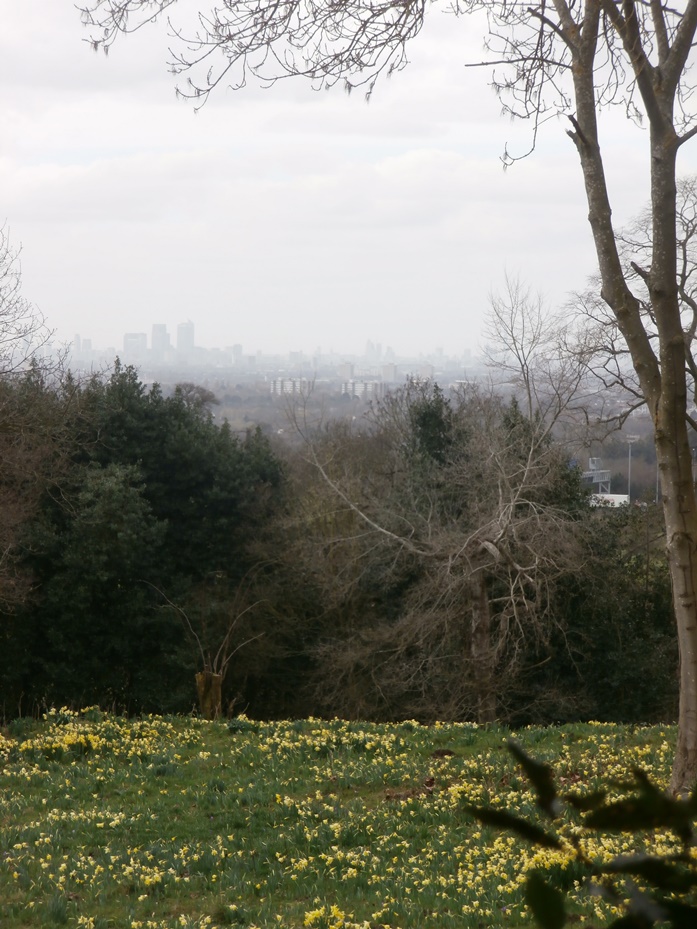To Warley Place in Essex in March to see the famous wild daffodils aka narcissus pseudonarcissus. You are expecting Wordsworth now aren’t you? No. As well as a renowned sweep of wild daffodils and cultivated snowdrops the garden is one of the last places where the early English crocus grows naturally. So, below…

The Year’s Awakening ~ Thomas Hardy,
How do you know that the pilgrim track
Along the belting zodiac
Swept by the sun in his seeming rounds
Is traced by now to the Fishes’ bounds
And into the Ram, when weeks of cloud
Have wrapt the sky in a clammy shroud,
And never as yet a tinct of spring
Has shown in the Earth’s apparelling;
O vespering bird, how do you know,
How do you know?
How do you know, deep underground,
Hid in your bed from sight and sound,
Without a turn in temperature,
With weather life can scarce endure,
That light has won a fraction’s strength,
And day put on some moments’ length,
Whereof in merest rote will come,
Weeks hence, mild airs that do not numb;
O crocus root, how do you know,
How do you know?
And the path through the garden parallel to the modern main road, the B186, was once the main road and part of the pilgrim’s way between the Shrine of Our Lady of Walsingham in Norfolk and Canterbury. Depending on where the pilgrim started from and where he was going any road could be a ‘pilgrim’s way’ but there was an established route between these two important places of pilgrimage which were serviced at intervals by hostelries and religious foundations. Pilgrims coming from north Essex would enter Brentwood at Pilgrims Hatch (now a suburb, then it was a gate), and stop at the Chapel dedicated to St Thomas aBecket which remains are still visible in the High Street. 7 miles further south at Hornchurch was a Priory run by the monks of the Abbey of Savoy. They specialised in succouring pilgrims and are better known for their work in the Alps, St Bernard dogs and mountaineering. Then at Rainham on the north bank the monks of Lesnes Abbey in Kent ran a ferry across the Thames which took them onto ancient tracks that predated the Romans that would take them to Canterbury, maybe by way of Rochester.
 The path that was once the main road.
The path that was once the main road.

 The view across the daffodil bank to London. It wasn’t the clearest day and I didn’t have binoculars but Canary Wharf was unmistakable, as was the Gherkin (the Swiss Re building) and The Cluster generally.
The view across the daffodil bank to London. It wasn’t the clearest day and I didn’t have binoculars but Canary Wharf was unmistakable, as was the Gherkin (the Swiss Re building) and The Cluster generally.
The wild daffodil is smaller and daintier than the currently popular cultivated varieties. And the bell is darker than the other petals, which on some plants, in some lights are almost white.
Elizabeth Goudge knew this when in her novel Towers in the Mist she described the preparations of the Leigh family for their part in the feast to entertain Queen Elizabeth I at Christ Church college.
The twins wore their new dresses of daffodil-yellow. They had pleaded for yellow dresses, real grown-up dresses with the kirtles of a deeper yellow than the farthingales – “because the daffodils wear them like that, and when we wear them in Christ Church Hall we shall be grown-up”…
They remembered …the May Day when Faithful had come, when they had run out into the garden and seen the late daffodils dancing in the wind.

Warley Place itself is worth a brief explanation. At the time of the Doomsday book the area was mostly part of the Manor of Warley Abbess and held by the great Royal convent of Barking Abbey. At the dissolution of the monasteries the land was sold into private hands, divided, sold on and eventually the house (described in 1725 as ancient, which could mean any age) was bought by the Willmott family at the end of the 19th century. Miss Ellen Willmott was one of that group of formidable English lady gardeners of the early 20th century and she spent a fortune on enlarging and developing the garden. She introduced many exotic plants (some remain, many don’t), is said to have employed 100 gardeners and thought that plants grew best in their native conditions, which she re-created in her garden. She died in 1934, the house was demolished in 1939 and the plants took hold of the ruins. The Essex Wildlife Trust now lease, run and conserve the estate. The Telegraph may call it one of Britain’s great forgotten gardens. But we know where it is.
I started in April 2016. Unless I see anything of sufficient interest to merit ‘March II’ that’s the round year.
Photographs E Weatherwax March 2017 England







